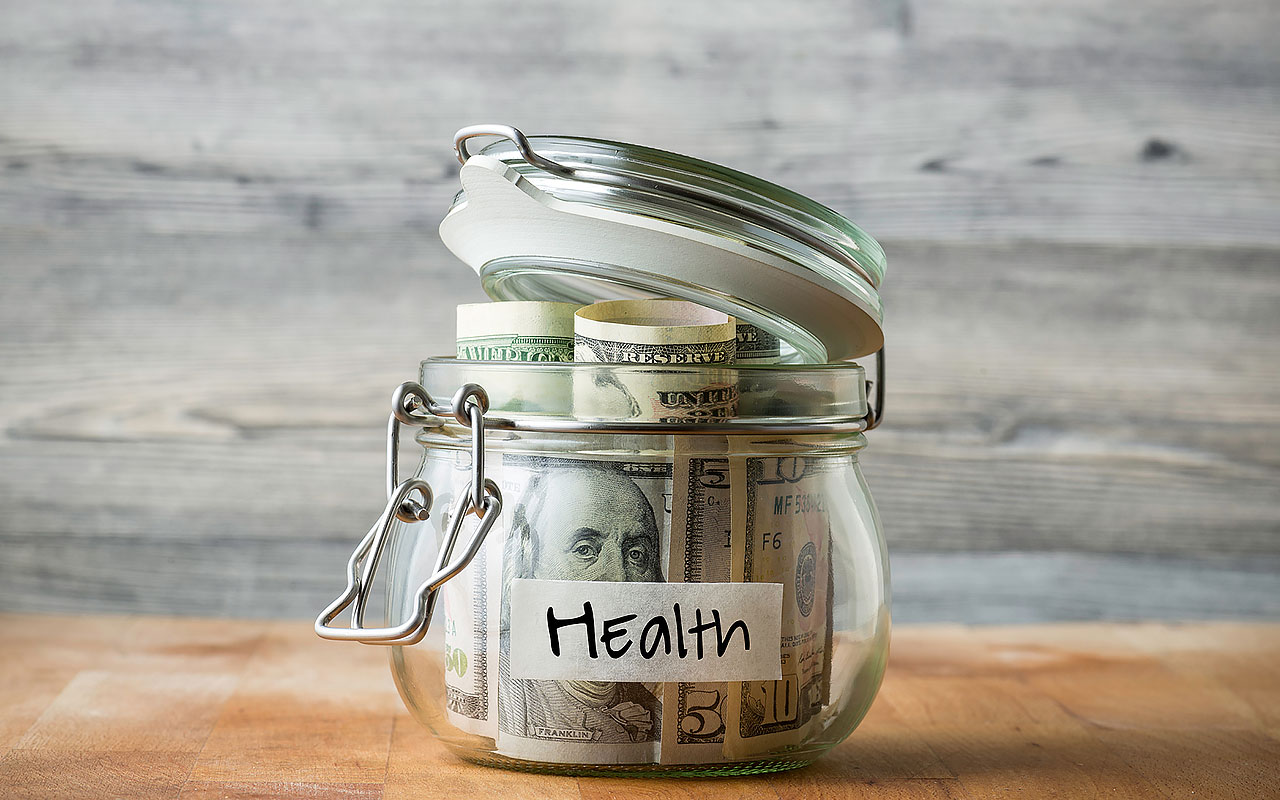13 Smart Uses for Your Tax Refund
If you have a refund check coming your way, consider using it to bolster your personal balance sheet.

Kimberly Lankford
If you have a refund check coming your way, consider using it to bolster your personal balance sheet. The average direct deposit tax refund this year is $3,330. That's a nice chunk of change. Here are 13 good things you could do with the money.

Pay Off Your Credit Card Debt
Credit card debt in the U.S. has reached staggering levels, with balances now totaling $1.21 trillion. In the fourth quarter alone, credit card balances grew by $45 billion, marking a 4% increase from the previous year, according to the Federal Reserve Bank of New York. With interest rates remaining high, carrying a balance on your credit card can be an expensive burden.
The average credit card interest rate currently stands at 20.09%, slightly lower than the record 20.79% set in August 2024, according to Bankrate. Even at this reduced rate, the cost of carrying a balance adds up quickly.
For example, a $5,000 balance at 20.09% interest would accrue over $1,000 in interest over a year if only minimum payments are made.
By using your tax refund to pay off your credit card debt, you’ll not only save money on interest but also improve your financial health by lowering your credit utilization ratio. Reducing your balance can also free up more of your income for savings, investments, or essential expenses.
If you can’t pay off your entire balance, consider putting as much of your refund as possible toward it and developing a plan to tackle the remaining debt. Strategies like the debt snowball (paying off the smallest balance first) or the debt avalanche (prioritizing the highest interest debt) can help you get out of debt faster and save money in the long run.

Rebuild Your Emergency Fund
It’s a good idea to keep three to six months’ worth of expenses in an emergency fund, so you don’t land in debt or have to raid retirement funds if you have unexpected expenses. If you’ve had to tap the fund over the past few years, you can use your refund to help build the account back up.
Even adding a small portion of your refund can help strengthen your financial safety net, making it easier to handle life’s surprises.
Beyond just the numbers, having a well-funded emergency account provides peace of mind. Knowing you have a financial buffer in place allows you to make decisions from a position of strength rather than desperation.

Boost Your Retirement Savings
You can contribute up to $7,000 to a Roth IRA, or $8,000 if you’re 50 or older, and withdraw the money tax-free in retirement, provided you meet the age and holding period requirements.
You can contribute the full amount as long as your Modified Adjusted Gross Income (MAGI) is below $146,000 if you’re single or $230,000 if you’re married and filing jointly.
If your income falls between $146,000 and $161,000 as a single filer or $230,000 and $240,000 as a joint filer, you can make a partial contribution. However, if your income exceeds $161,000 as a single filer or $240,000 as a joint filer, you are not eligible to contribute directly to a Roth IRA.
If you work and your spouse does not, you can contribute to a spousal Roth IRA in their name, as long as your joint income falls within the Roth IRA income limits.
Since Roth IRAs grow tax-free, contributing can be a powerful way to build long-term retirement savings while ensuring that your future withdrawals won’t be taxed, giving you more financial flexibility in retirement.

Fund a Taxable Account
If you’re considering investing your tax refund, it’s important to align your investment choice with your financial goals and timeline. If your goal is long-term growth, you might use the extra cash to invest in a mutual fund or stock that isn’t available in your 401(k) or feels too risky for your IRA.
However, if you’re saving for a short-term goal, such as purchasing a home or car, the stock market may not be the best choice due to its volatility. Instead, consider stable, low-risk investment vehicles like certificates of deposit (CDs) or money market accounts. As of April 2025, many institutions are still offering 1-year CDs with APYs exceeding 4%, while some money market accounts offer rates up to 4.50%. These options allow you to grow your tax refund with minimal risk, making them ideal for short-term financial objectives while ensuring your funds remain accessible when you need them.

Fill Gaps in Your Insurance
Liability insurance is designed to protect you financially if you're found responsible for causing injury or property damage to others. For example, in auto insurance, liability coverage pays for the other party's medical expenses and property repairs when you're at fault in an accident. Similarly, homeowners insurance typically includes liability coverage to protect you if someone is injured on your property.
However, standard auto and homeowners policies may have liability limits that are insufficient to cover significant claims. To bridge this gap, you can purchase a personal umbrella policy, which provides additional liability coverage beyond the limits of your existing policies.
Umbrella policies are relatively affordable. Obtaining $1 million in coverage typically costs between $200 and $400 annually. This extra layer of protection can be critical in safeguarding your assets and covering legal expenses if you're held liable for substantial damages or injuries.

Build Your College Savings
It’s always challenging to balance saving for college and retirement, but a 529 account can help you set aside money for education expenses while offering tax advantages. You can contribute to a 529 plan, and the funds grow tax-free when used for qualified education expenses.
In addition to covering college costs, you can use up to $10,000 per year to pay for K-12 tuition at private or religious schools. Many states also offer a state income-tax deduction or credit for contributions, making it a smart way to invest your refund in your child’s education while reducing your tax burden.

Help Your Kid Save
Establishing a Roth IRA for your child with your tax refund can provide a significant head start on retirement savings. Children of any age are eligible to contribute, provided they have earned income, which includes wages from jobs like mowing lawns or babysitting. The contribution limit is up to $6,000 or the total amount of their earned income for the year, whichever is less.
As a parent, you can gift them the cash to make this contribution, effectively matching their earnings. This strategy not only fosters early saving habits but also leverages the power of compound growth over time.
Additionally, Roth IRAs offer flexibility, as contributions can be withdrawn at any time without taxes or penalties, serving as a potential emergency fund. However, earnings withdrawals are subject to certain conditions to avoid taxes and penalties, typically requiring the account to be at least five years old and the account holder to be over 59½.

Prepay Your Vacation and Save for Short-Term Goals
Instead of charging your vacation to a credit card and paying interest long after your trip ends, consider using your tax refund to prepay for your getaway. Not only does this help you avoid debt, but it also allows you to take advantage of travel deals and book stress-free, knowing your trip is already covered.
If you have a travel rewards credit card, check your balance — your accumulated points or miles might cover flights, hotel stays or even an entire vacation package. Pairing your refund with rewards can significantly reduce costs, making it easier to splurge on experiences rather than expenses and maximize your travel rewards.
For those who love adventure on the road, consider renting an RV for a scenic road trip, where you can explore national parks, beaches or hidden gems without the high cost of airfare and hotels. If you prefer a more all-inclusive experience, use your refund to book a cruise, which bundles lodging, food and entertainment into one price — making it easier to budget upfront and relax once you're on board.
Even if you’re not traveling right away, setting aside your tax refund in a savings account for a future trip ensures you’re financially prepared when the time comes, whether it’s for holiday travel, a dream getaway or a spontaneous weekend escape.

Invest in Your Home
While your tax refund may not cover extensive renovations like a full kitchen or bathroom remodel, it can fund impactful home improvements. Consider projects such as adding a backsplash, painting rooms or cabinets, replacing bathroom fixtures, upgrading faucets, organizing closets, installing a programmable thermostat or enhancing your yard. These upgrades not only refresh your living space but also align with features that today's buyers desire, potentially increasing your home's value.
Additionally, investing in home hardening — strengthening your home against natural disasters — can be a wise use of funds. Simple measures like installing storm shutters, reinforcing garage doors or securing heavy furniture can significantly enhance your home's resilience to events such as hurricanes, earthquakes or wildfires. These proactive steps not only protect your property but may also lead to savings on insurance premiums.

Save for Your Health
Contribute to a health savings account. For 2024, the HSA contribution limits are $4,150 for individuals and $8,300 for families. Additionally, if you're 55 or older, you can make a catch-up contribution of $1,000.
An HSA offers a triple tax benefit: contributions are tax-deductible, earnings grow tax-free, and withdrawals for qualified medical expenses are also tax-free. These funds can be used to pay for deductibles, co-payments, prescription drugs and other medical expenses not covered by insurance.
Furthermore, after age 65, you can use HSA funds to pay Medicare Part B, Part D, and Medicare Advantage premiums. However, once you enroll in Medicare, you can no longer make new contributions to your HSA.
To be eligible for an HSA in 2024, your HDHP must have a minimum deductible of $1,600 for individual coverage or $3,200 for family coverage. The maximum out-of-pocket expenses for these plans are $8,050 for individuals and $16,100 for families.
By contributing to an HSA, you can effectively manage current medical costs and save for future healthcare expenses, all while benefiting from substantial tax advantages.
For more information, see 10 Things You Need to Know About Health Savings Accounts.

Pay for Planning
Meet with a financial planner. Many financial advisers charge an ongoing 1% of assets under management to manage your investments. But some advisers charge by the hour or the project.
You may, for instance, pay $250 per hour for a fee-only adviser to spend five or six hours creating a financial roadmap for certain goals, such as saving for college or funding health care in retirement.
Or, if your needs are not complex, you may be able to get a basic financial review and initial plan for as little as $500 to $1,000, with prices rising with the level of complexity.
If you’re new to finding an adviser, consider using platforms like Money Pickle, an online financial adviser matching service. Money Pickle matches you with a vetted financial adviser for a free 45-minute consultation, during which you can discuss your financial questions and concerns with no commitment.
For more information, see How to Find the Right Financial Adviser for You and Your Money.

Establish an Estate Plan
If you don’t have estate-planning documents, you can use your tax refund money to make your wishes known for the future. You can meet with a lawyer to draw up three key documents: a will that divvies up your assets and appoints a guardian for your children; a health-care proxy, which designates someone to make medical decisions on your behalf if you’re unable to; and living will, which outlines your wishes for end-of-life medical care.
In addition to drafting these documents, it's important to organize and securely store them. Using digital storage solutions can enhance accessibility and security. For instance, Quicken's LifeHub offers a platform to securely store and manage your financial documents, ensuring they are protected from physical damage and easily accessible when needed.
By proactively establishing and organizing your estate plan, you provide clarity and peace of mind for yourself and your loved ones, ensuring that your affairs are managed according to your wishes.

Give to Others
If you've addressed your financial priorities, using your tax refund for charitable contributions can be both fulfilling and tax-efficient. While the increased standard deduction has reduced the number of taxpayers who itemize, strategies like bunching — combining multiple years' worth of donations into a single year — can make itemizing more advantageous. This approach allows you to exceed the standard deduction threshold, maximizing your tax benefits.
Establishing a donor-advised fund (DAF) is another effective method to manage and amplify your charitable giving. By contributing a lump sum to a DAF, you receive an immediate tax deduction and retain the flexibility to distribute funds to your chosen charities over time. This strategy not only simplifies the donation process but also allows the invested funds to grow tax-free, potentially increasing the impact of your contributions.
Incorporating charitable giving into your financial plan not only supports causes you care about but also offers potential tax advantages, making it a thoughtful use of your refund.
Profit and prosper with the best of Kiplinger's advice on investing, taxes, retirement, personal finance and much more. Delivered daily. Enter your email in the box and click Sign Me Up.

Carla Ayers joined Kiplinger in 2024 as the eCommerce and Personal Finance Editor. Her professional background spans both commercial and residential real estate, enriching her writing with firsthand industry insights.
Carla has worked as a personal finance and real estate writer for Rocket Mortgage, Inman and other industry publications.
She is passionate about making complex real estate and financial topics accessible to all readers. Dedicated to transparency and clarity, her ultimate goal is to help her audience make informed and confident decisions in their financial pursuits.
- Kimberly LankfordContributing Editor, Kiplinger's Personal Finance
-
 Is Mechanical Breakdown Insurance Better Than an Extended Car Warranty?
Is Mechanical Breakdown Insurance Better Than an Extended Car Warranty?More insurers are starting to offer mechanical breakdown insurance to new car owners. What is it and should you buy it?
-
 What to Do When You Bank Lowers Your APY
What to Do When You Bank Lowers Your APYWhy banks lower APYs, options you can explore when it happens and whether more rate cuts are on the horizon.
-
 Forget Financial Forecasts: Focus on These 3 Goals for Success
Forget Financial Forecasts: Focus on These 3 Goals for SuccessWe know the economy is unpredictable and markets will do what they do, no matter who predicts what. Here's how to focus on what you can control.
-
 States That Tax Social Security Benefits in 2026
States That Tax Social Security Benefits in 2026Retirement Tax Not all retirees who live in states that tax Social Security benefits have to pay state income taxes. Will your benefits be taxed?
-
 What to Do With Your Tax Refund: 6 Ways to Bring Growth
What to Do With Your Tax Refund: 6 Ways to Bring GrowthUse your 2024 tax refund to boost short-term or long-term financial goals by putting it in one of these six places.
-
 What Does Medicare Not Cover? Eight Things You Should Know
What Does Medicare Not Cover? Eight Things You Should KnowMedicare Part A and Part B leave gaps in your healthcare coverage. But Medicare Advantage has problems, too.
-
 12 Great Places to Retire in the Midwest
12 Great Places to Retire in the MidwestPlaces to live Here are our retirement picks in the 12 midwestern states.
-
 15 Cheapest Small Towns to Live In
15 Cheapest Small Towns to Live InThe cheapest small towns might not be for everyone, but their charms can make them the best places to live for plenty of folks.
-
 Best Cold Weather Places to Retire
Best Cold Weather Places to RetirePlaces to live Some like it hot; others, not so much. Here are the 12 best places to retire if you can't stand the heat.
-
 15 Reasons You'll Regret an RV in Retirement
15 Reasons You'll Regret an RV in RetirementMaking Your Money Last Here's why you might regret an RV in retirement. RV-savvy retirees talk about the downsides of spending retirement in a motorhome, travel trailer, fifth wheel, or other recreational vehicle.
-
 The 24 Cheapest Places To Retire in the US
The 24 Cheapest Places To Retire in the USWhen you're trying to balance a fixed income with an enjoyable retirement, the cost of living is a crucial factor to consider. Is your city the best?
